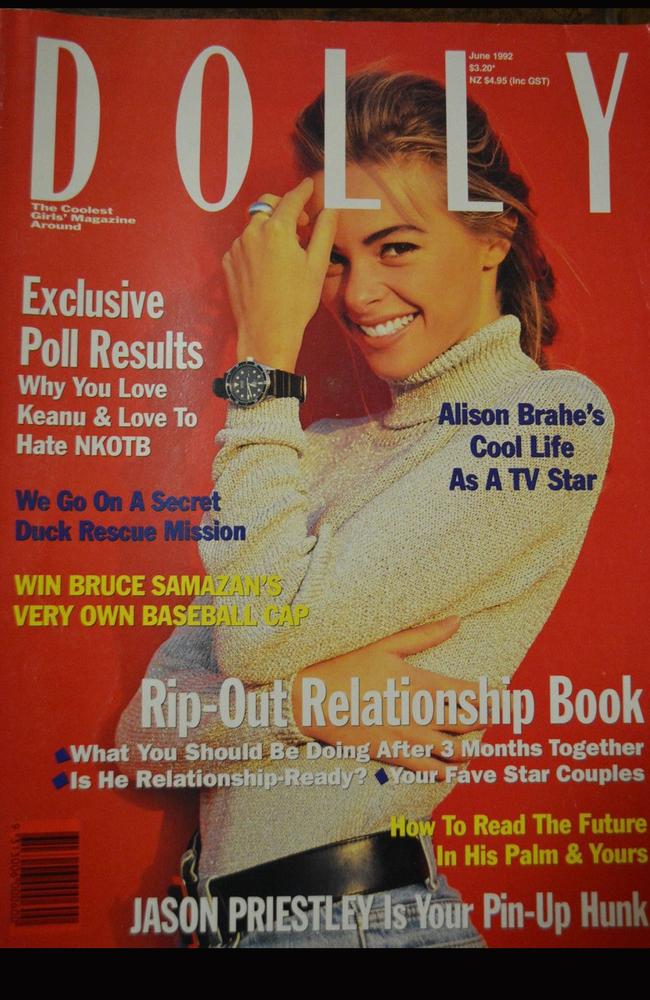Marina Go: Dolly made me do it
MARINA Go was Dolly magazine’s biggest fan. She was the magazine’s editor and more recently publisher at Bauer Media. She knows why it was axed.
I BOUGHT my first copy of Dolly magazine at 13, as I also began my first year of high school and puberty was taking over my body. Dolly Doctor became my bible.
I was the older sister in my family and none of my girlfriends had big sisters either so Dolly magazine it was when I was too embarrassed to ask anyone about the changes that were taking place in my body, those feelings about a certain boy that were keeping me awake at night and any conflicts that arose when navigating the various gangs in the schoolyard.
As well there was a seemingly endless supply of heart-throb posters to paste to my bedroom walls and fashion ideas and beauty tips that kept me feeling confident.
Dolly never let me down.
The day of the month that the magazine went on sale was burned into my brain and I was literally the first person at the newsagent on that day to buy my copy on the way to school.
I collected them and bought the special Dolly binders to protect them.
It was only when my mother was clearing out boxes containing childhood memories from her garage about a decade ago, when I was aged 40, that I could finally allow her to place them in the recycling bin.
But it was hard to watch and I almost went back in there to salvage them.
Shortly after my 16th birthday and faced with thoughts about my future career direction, I turned to my favourite and the answer was right there in front of me. I wanted to be the editor of Dolly.
The magazine was my passion and one of my teachers had told me to follow my heart.
I was appointed to my dream job as Dolly editor in 1989 at the age of 23. The average monthly circulation had plummeted from a high of 260,000 copies to a low of 160,000 copies in six months and someone with a passion for the magazine was required to get it back on track.

Teenage girls are unforgiving, and the magazine wasn’t giving them what they wanted. In the four and a half years that I edited Dolly, my devoted team and I worked night and day including weekends to create the magazine our readers wanted.
We had to fight off Dolly’s first serious competitor when Girlfriend magazine launched during that time. We managed to get the average circulation back over 200,000 copies per month with my final issue, February 1994, selling 220,000 copies. There was serious love coursing through that magazine.

But fast forward two decades and teenage girls are now a digital marketer’s dream. When that media disrupter called the internet came along, with social media as the cherry on top, every publisher knew that it was going to be almost impossible to retain their interest in something that came out monthly.
Young women and girls are now on an “always on” time frame, rather than the monthly time frame that we were publishing to, and have a need for instant gratification.
As fashion, music and media became more immediate, teenage magazines were becoming increasingly challenged.
The success of the Dolly website almost guaranteed the end of the print version. Dolly readers check their phones 130 times a day. How could a magazine, no matter how brilliantly executed, as it was to the end, compete with that?
I was fortunate enough to have been given Dolly to publish, online and in print, earlier this year, just after the decision was made to take the magazine’s frequency to bimonthly.
I groaned quietly. The whole Dolly team did.
Less frequently, for teenagers? Editor Josie Rosenberg-Clarke and her tiny team of four took a deep breath, got back on that horse and created a brilliant version of the magazine that succeeded in lifting the magazine’s average circulation for the first time in about five years.
But it wasn’t enough. It was never going to be enough. The economics just didn’t stack up. Not enough print revenue anymore for the teenage market.
In its final year the brand booked more advertising revenue online. And you don’t need to be a media executive to understand that the costs of creating the digital product would be lower.
But let’s not pine for the good old days before social media or lay blame for what might have been. No one got it wrong or stuffed up. It was simply time to let the future take its course.
Dolly was a force in the lives of most teenage girls for 46 years and we will never, ever forget it.

Marina Go was the editor of Dolly from 1990-1994. She writes extensively about those Dolly days in her book Breakthrough: 20 Success Strategies for Female Leaders



